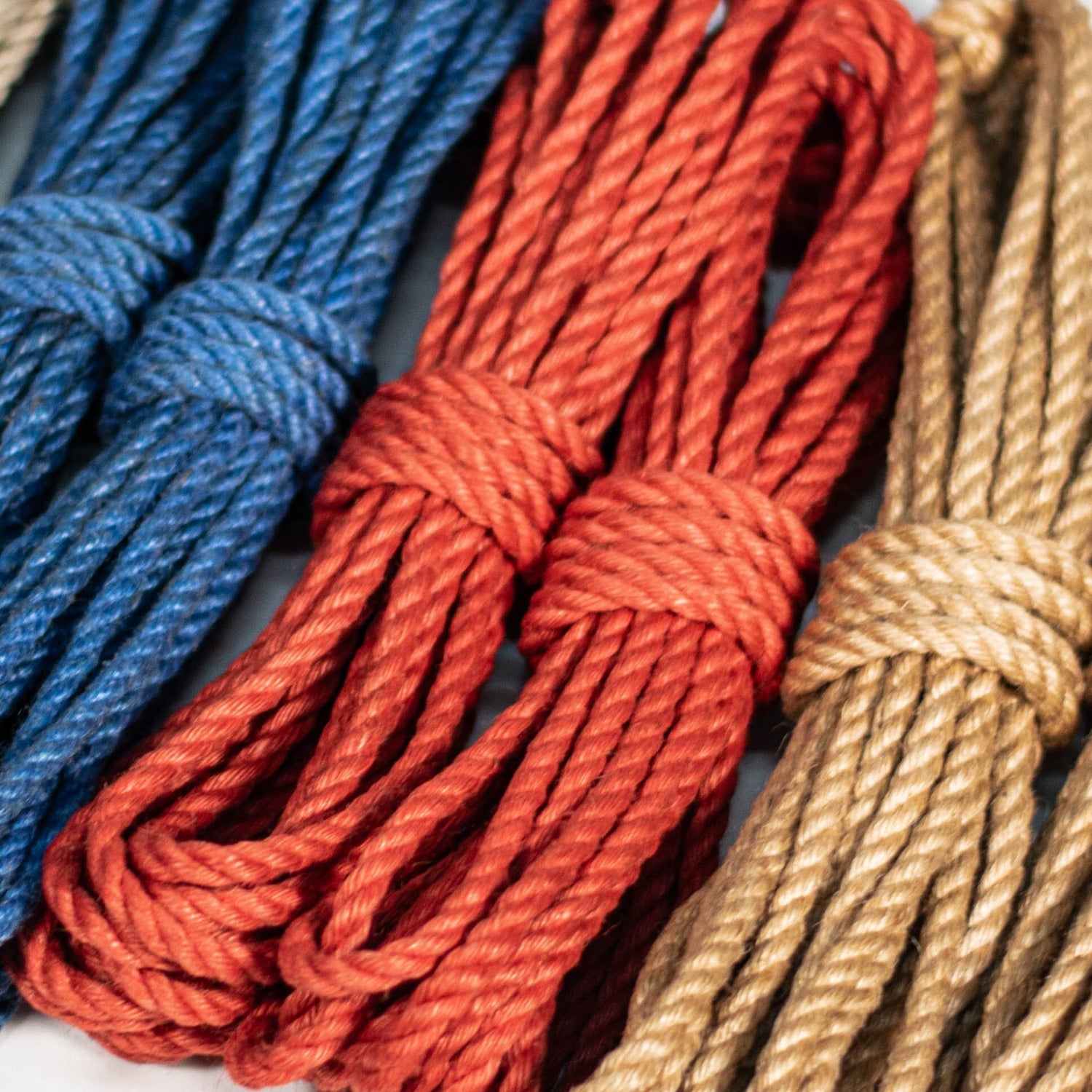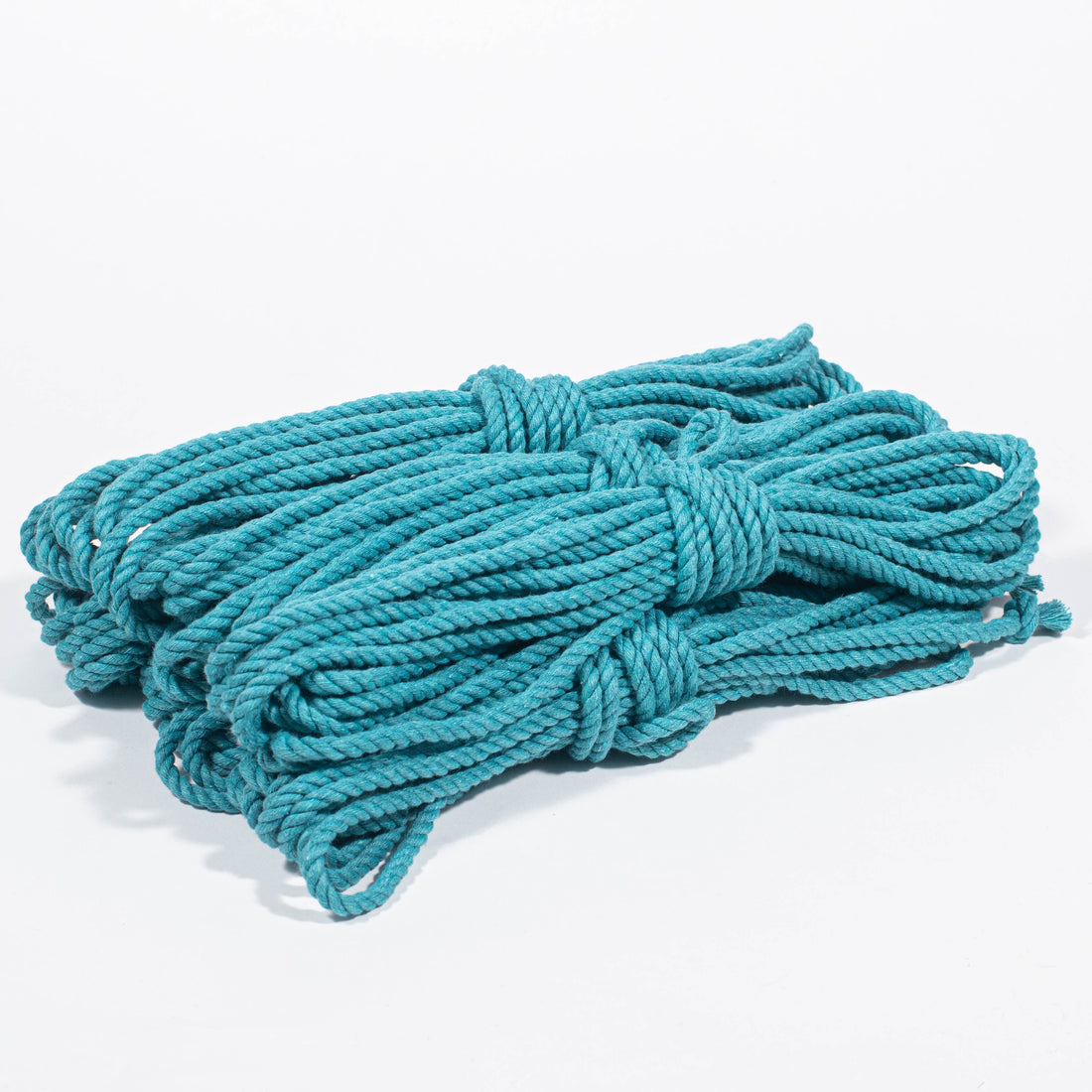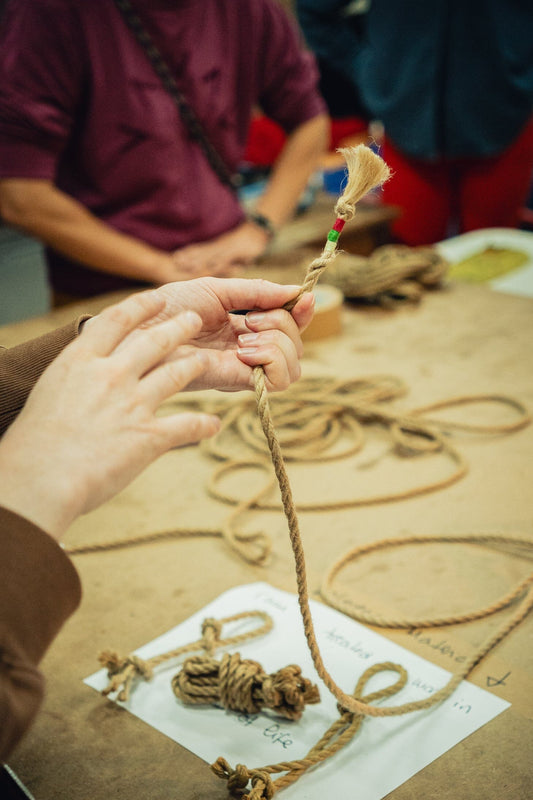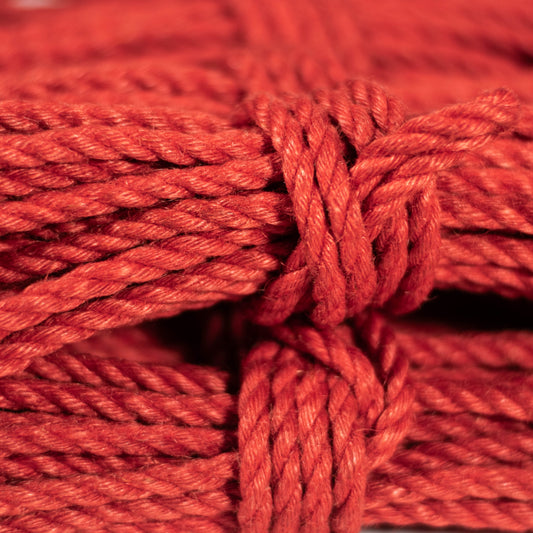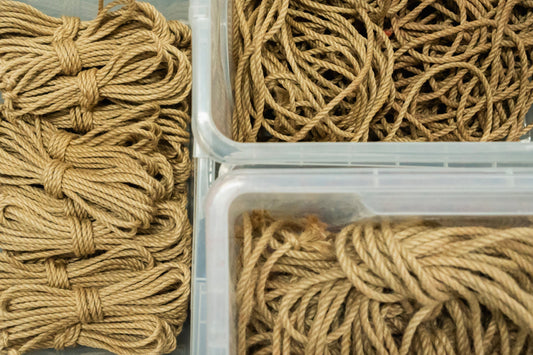Yes there are differences between cotton and jute, and here’s a quick breakdown of the key differences between them when it comes to shibari rope.
Typically in shibari we tend to use jute because it has a few properties that fit with the philosophy and aesthetics of what we do. Namely jute fibre is natural (it’s a plant), light in weight (and therefore it's easy to manipulate), it quickly becomes silky smooth with use (which means we can tie on skin without worrying about rope burn), and the colour and construction (golden, honey brown with 3 distinct strands) is visually stunning in photography, especially for those capturing more traditional Japanese inspired aesthetics.
But if none of this is important for you, and you just want a rope you can tie with reliably, what are the practical differences between cotton and jute?
Here are 4 key differences between the two:
- Elasticity
Jute has almost no elasticity to it, meaning the frictions compress well but the knots and frictions are easy to untie as the rope is not too squishy. This is really convenient when it comes to use for suspension lines, firstly because the rope doesn’t have much bounciness, and secondly because the frictions don't tighten overly under a person's weight so they are easy to undo.
Cotton is more elastic, so frictions have the tendency to compress a bit more. This is especially noticeable in suspension lines where frictions tend to compress under the weight. The cotton's elasticity also means heights are a bit tricker to preempt as both suspension lines and harnesses will stretch under tension.
For bedroom play and floor work however you probably won't notice it too much, but if you're trying to tie more traditional patterns like a Takate Kote where the tensioning has to be very precise, you might notice it's trickier to set the tension with cotton.
- Will it get wet?
The biggest drawback to jute however is that it does not like water. The consistency of jute rope will change drastically when it gets wet: it loses all its tension and becomes more like overcooked pasta, noodle-like and thick, unless you dry it under tension. This is however time consuming and laborious so for this reason we don't tend to wash jute or use it in water.
Wondering how to clean jute? That’s coming in a next blog post.
Cotton on the hand can be easily cleaned by throwing it in the washing machine, so it's perfect for messier play and even for use in water. This makes it a very practical choice for play as it's low fuss and low maintenance.
3. Maintenance
Jute is a bit high maintenance. That's part of the pleasure when getting into shibari though. The act of taking care of your rope can be quite ritualistic and be a source of pride too. We tend to use oils like jojoba and camellia and also beeswax to maintain the look and feel of the rope, and we also like to hang the rope to make it nice and smooth. For more info on this you can read our blog posts on oils for treating rope and rope maintenance.
With cotton you don't need to worry about maintenance at all. It's quite a soft fibre to begin with so you can just use it as is and not have to worry about any form of upkeep.
4. Price
Raw jute can be unpleasant to tie with and smell a bit of chemicals, that's why we spend a lot of time carefully treating it in order for it to feel smooth and pleasurable to tie with. Because of all the labour involved, and because there aren't a ton of suppliers who even make jute suitable for shibari, this is reflected in the price. You'll notice that there's a noticeable difference in price between raw and treated jute. That's why.
Cotton on the other hand is ready to tie with as is off the reels. So we don't have to spend hours of labour making it perfect for you, as it's already quite a smooth material.
Personally, we like to have both ropes, we tie with our jute sets most of the time, but for some types of private play or scenes that don't involve suspension we will use cotton ropes.
In conclusion, both cotton and jute are great choices for shibari, which ones use depend on how you like to play and the aesthetics you prefer. Cotton is more affordable and easier to clean, but tricker to use for suspension. Jute needs some TLC, has a more traditional shibari look and is ideal for suspension.
